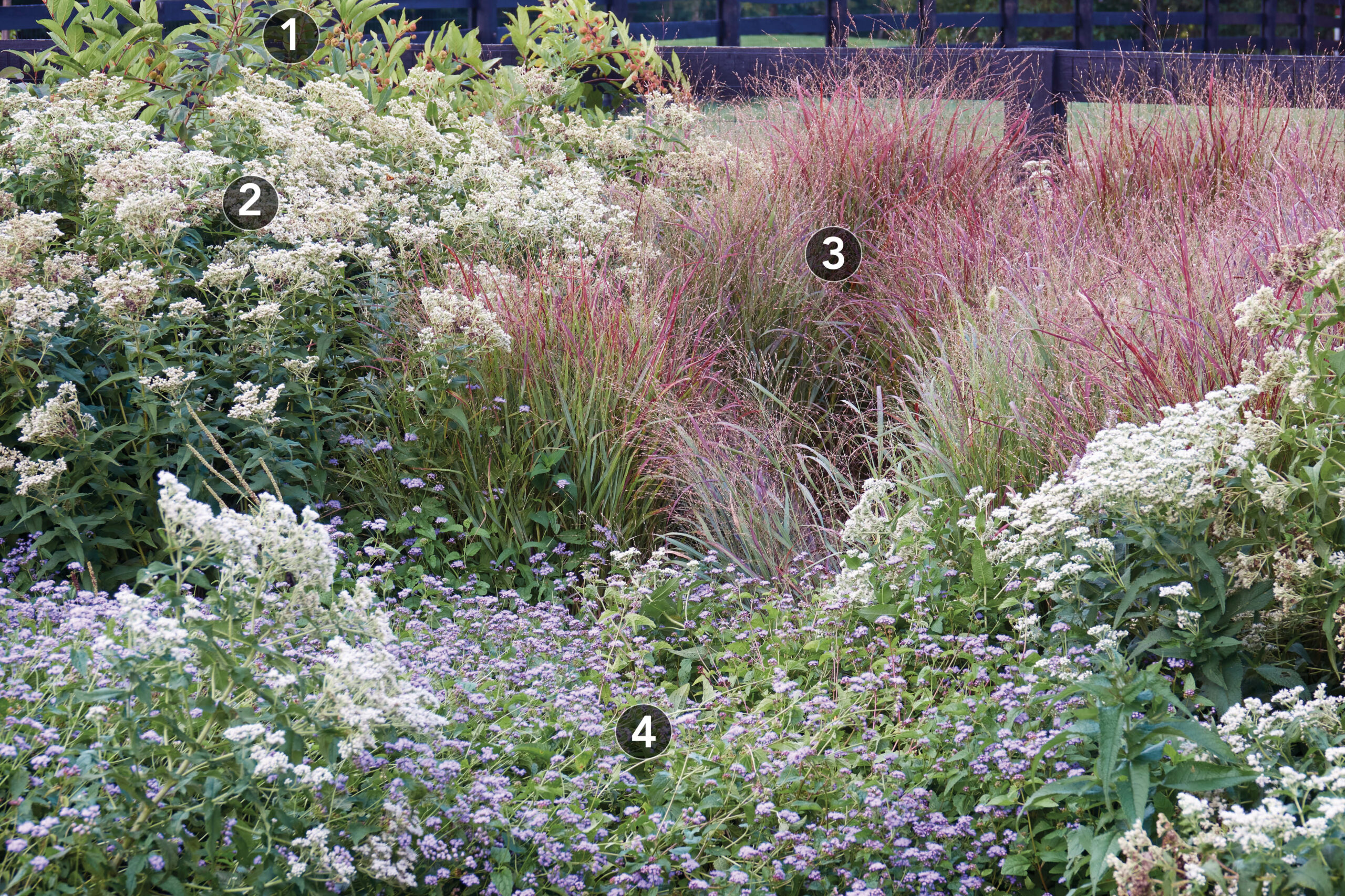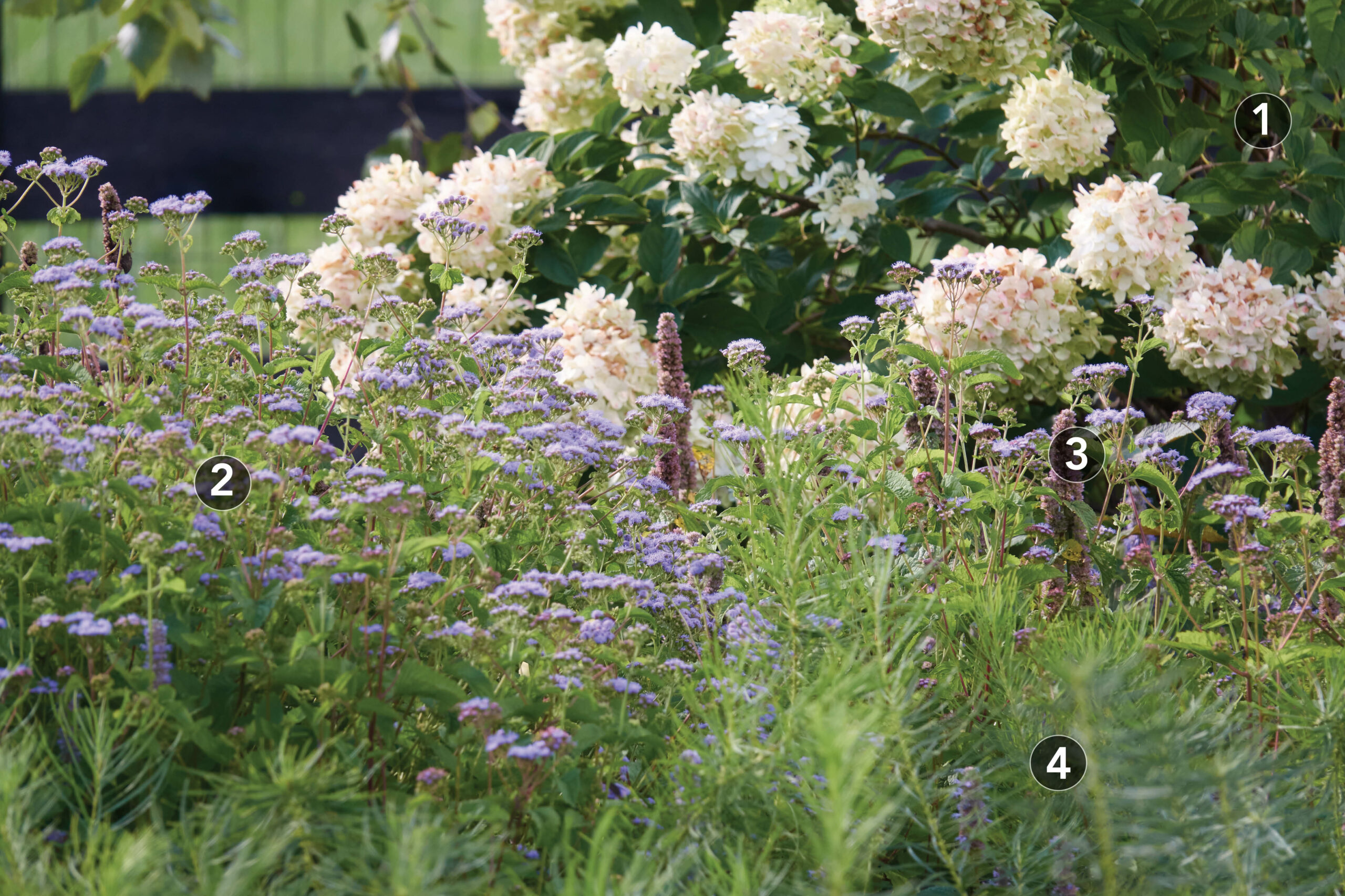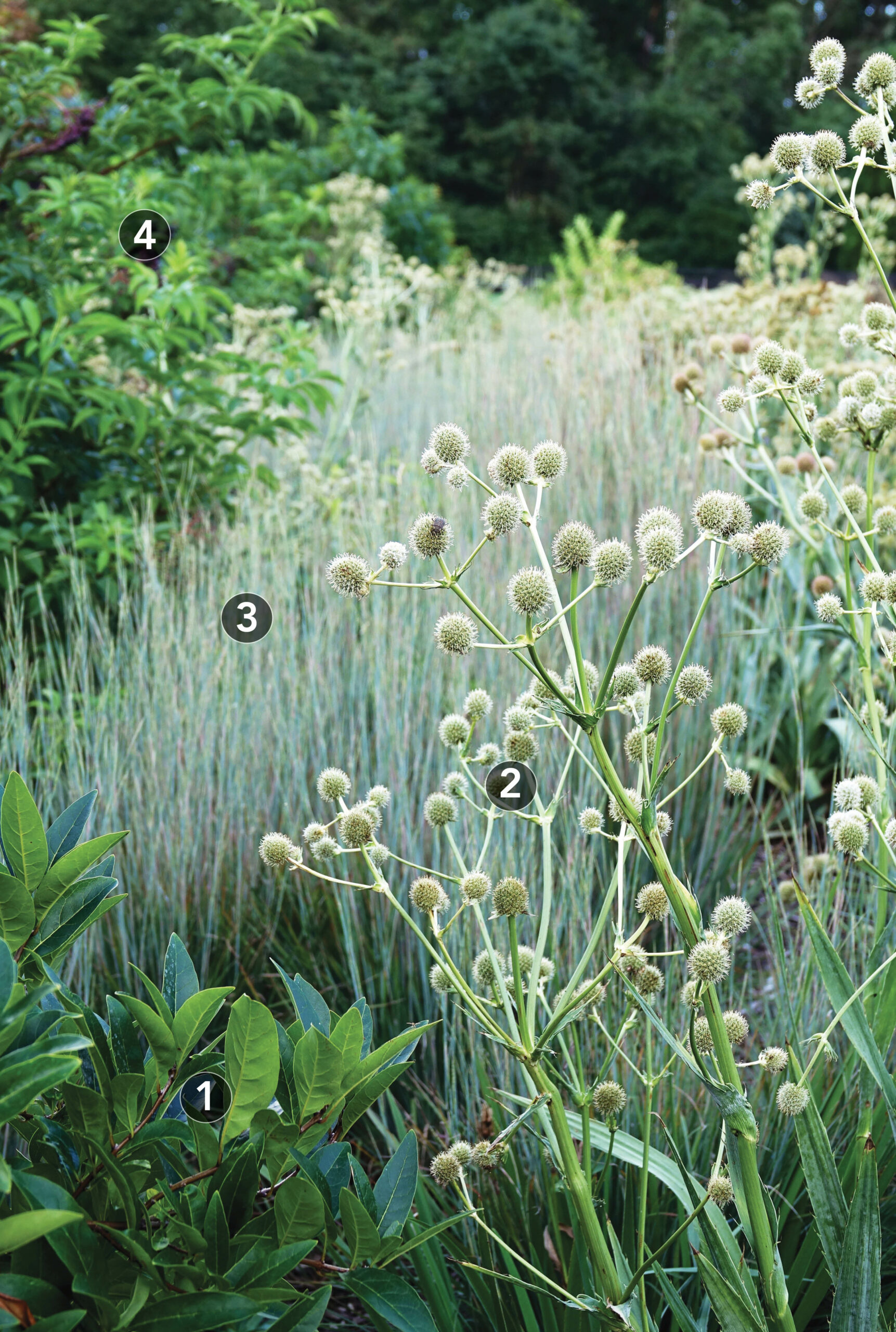When landscape designer John Magee was tasked with building a pollinator garden in this zone 7 property in Aldie, Virginia, he certainly had his work cut out for him. (See John’s garden here). Dominated by turfgrass and a few non-native shrubs and trees, this space overlooked a nearby golf course and the backyards of close neighbors, so creating privacy was a must. At the same time, the lawn-heavy neighborhood lent itself to enormous stormwater runoff. John decided to create a bermed border of planting beds in the backyard of this property which he bookended with rain gardens that would capture roof runoff in a more efficient way. To maximize benefit to pollinators, all of the plants John installed were natives or native cultivars, although he kept a few non-native favorites that his client could not live without, such as ‘Limelight’ panicle hydrangea. Using a muted color palette consisting of whites, purples, blues, and greens, John used matrix installations and drifts of plants to create a more upscale and refined design than one would traditionally think of when picturing a pollinator garden. Despite the lack of red and yellow wildflowers, bees and butterflies still flock to this functional space that is full of both nectar and host plants for them to enjoy.
Below are just some of the plants that make up this dynamic design:
- White fringe tree (Chionanthus virginicus, Zones 3-9)
- Rattlesnake master (Eryngium yuccifolium, Zones 3–8)
- ‘Standing Ovation’ little bluestem (Schizachyrium scoparium ‘Standing Ovation’, Zones 4-9)
- American black elderberry (Sambucuscanadensis, Zones 3-9)
- ‘Limelight’ panicle hydrangea (Hydrangea paniculata ‘Limelight’, Zones 3–9)
- Blue mistflower (Conoclinium coelestinum, Zones 5-9)
- Anise hyssop (Agastache foeniculum, Zones 4-8)
- Threadleaf bluestar (Amsonia hubrichtii, Zones 5–9)
- Buttonbush (Cephalanthus occidentalis, Zones 5-11)
- Boneset (Eupatorium perfoliatum, Zones 3-8)
- ‘Heavy Metal’ switch grass (Panicum virgatum ‘Heavy Metal’, Zones 5-9)
- Blue mistflower (Conoclinium coelestinum, Zones 5-9)
Diana Koehm is the content editor.
Fine Gardening Recommended Products
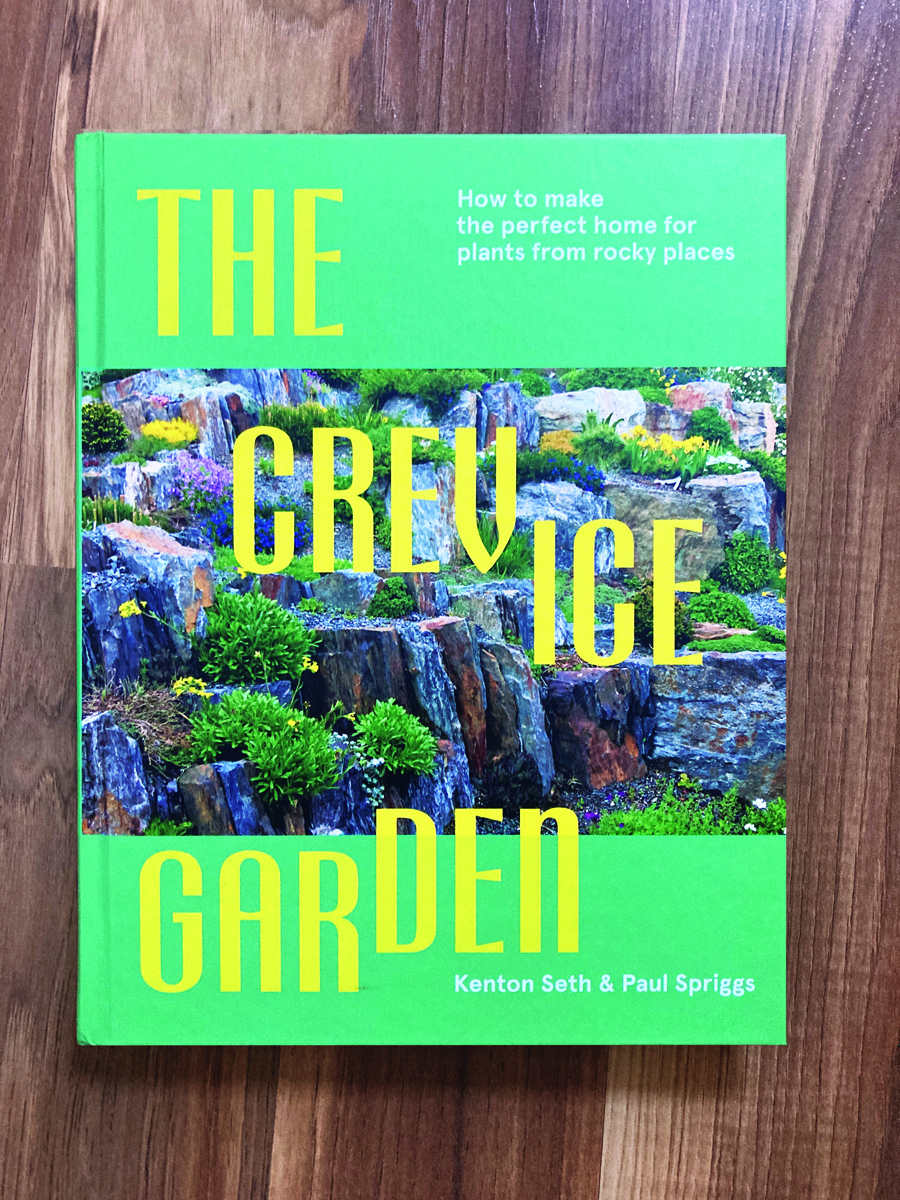
The Crevice Garden: How to make the perfect home for plants from rocky places
Fine Gardening receives a commission for items purchased through links on this site, including Amazon Associates and other affiliate advertising programs.
A crevice garden replicates the environmental conditions of mountain tops, deserts, coastlines, and other exposed or rocky places on earth. These striking garden features provide perfect conditions for the plants native to these far-off places, bringing the cultivation of these precious gems within everybody’s reach.
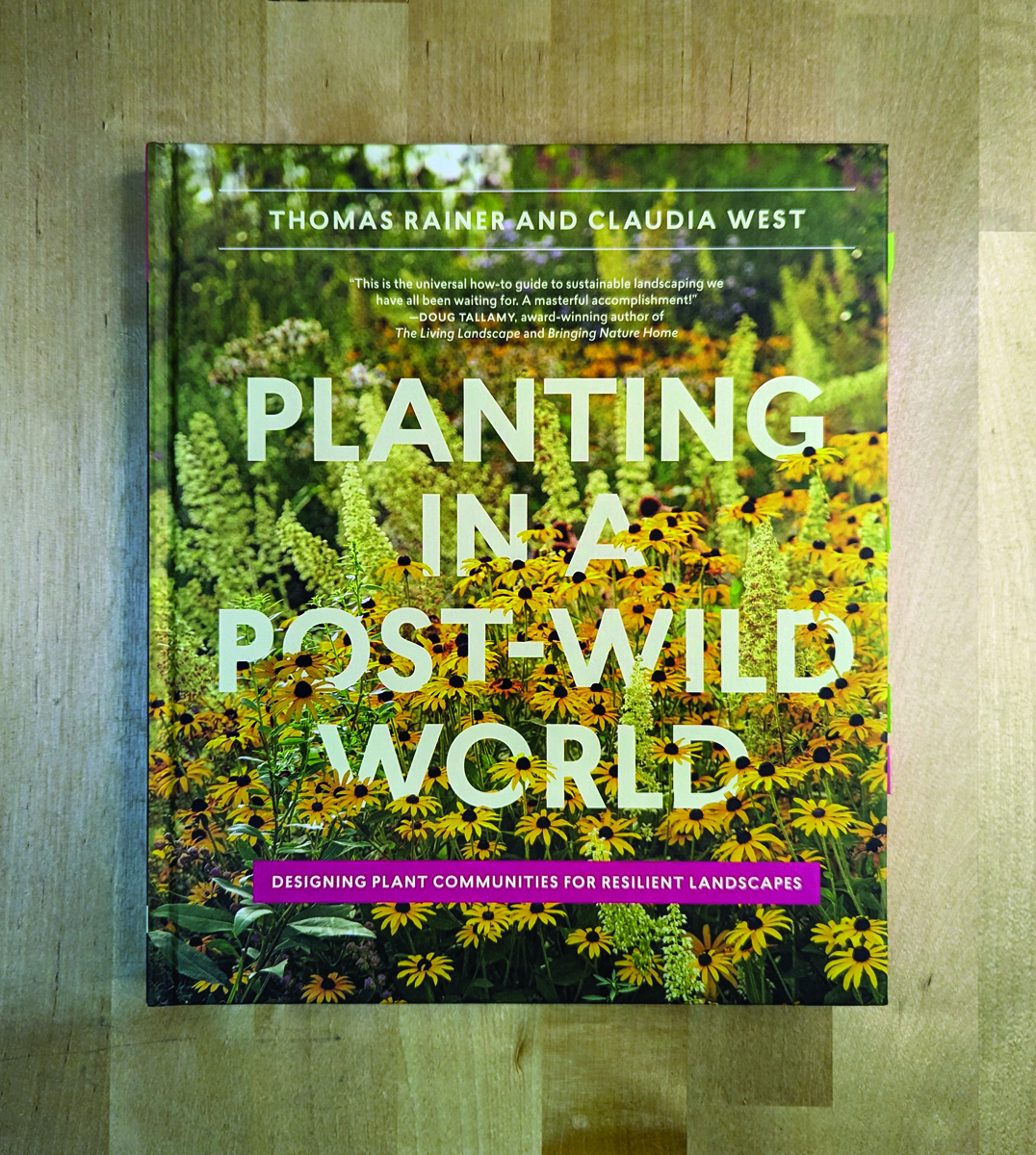
Planting in a Post-Wild World: Designing Plant Communities for Resilient Landscapes
Fine Gardening receives a commission for items purchased through links on this site, including Amazon Associates and other affiliate advertising programs.
Featuring gorgeous photography and advice for landscapers, Planting in a Post-Wild World by Thomas Rainer and Claudia West is dedicated to the idea of a new nature—a hybrid of both the wild and the cultivated—that can nourish in our cities and suburbs.
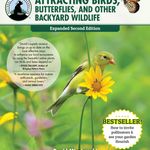
National Wildlife Federation®: Attracting Birds, Butterflies, and Other Backyard Wildlife, Expanded Second Edition (Creative Homeowner) 17 Projects & Step-by-Step Instructions to Give Back to Nature
Fine Gardening receives a commission for items purchased through links on this site, including Amazon Associates and other affiliate advertising programs.
From the National Wildlife Federation, the largest U.S. nonprofit conservation organization, with 6 million members and 51 state and territorial affiliated organizations. 17 step-by-step projects that everyone can do together make getting your family back to nature easy, educational, and fun. Over 200 color photos of backyard wildlife habitats and the wide variety of creatures they attract, plus step-by-step photos and illustrations for family projects. Learn wildlife-friendly practices for gardening, landscape design, supplemental feeders, birdbaths, nesting places, and more. Learn how to attract backyard pollinators, from bees and butterflies to beetles, bats, and hummingbirds
Get your garden certified by the National Wildlife Federation’s Garden for Wildlife(TM) program by following the included certification application checklist.

